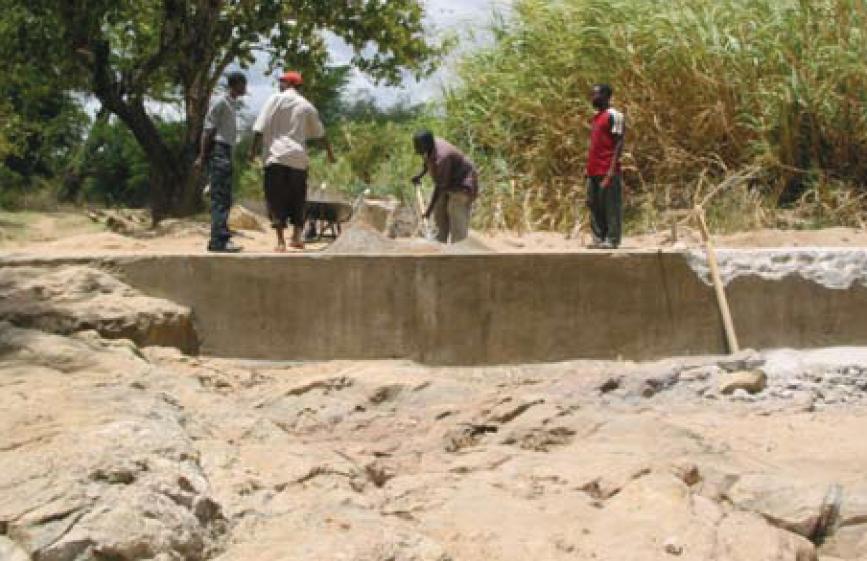Water Portal / Rainwater Harvesting / Groundwater recharge / Sand dam
Regions with highly erratic rainfall often have rivers with temporary seasonal sandy bed streams. They only experience heavy water run-off for short periods of time after rain. During such periods of high flows, large quantities of sand are transported downstream. Some sand can get trapped on the upstream sides of rocks outcroppings along the stream. Such sand traps form natural water storing aquifers. The sand dam technology provides a mean to reproduce this water collecting mechanism.
Water in natural collection sites is usually clean for drinking but quite finite and quickly gets depleted. Sand dams are an artificial improvement of sand beds where more water can be recharged and stored for water use. A concrete wall is constructed across the channel at specific sites to trap and hold back the sand during flooding; this creates an additional sub surface water bank for harvesting.
History and social context
In Kenya, it has been used with good outcome in the Kitui, Machakos and Samburu districts. Other countries with similar dry environments such as the U.S.A, Thailand, Ethiopia and Namibia also have used it in numerous and divers forms.
Suitable conditions
Expert input is required to determine the best site. Problems primarily relate to aspects of dam locations and construction. Accurate estimation of the groundwater reserves is difficult. Risk of erosion and contamination during the rainy season. With an accurate and appropriate location choice the total amount of water available in the sand dams can be over 6000m³.
| Advantages | Disadvantages |
|---|---|
|
|
Technical specification
Operation
Maintenance
Regular checks and repairs are required after floods.
Manufacturing
Dams made of concrete, stone-masonry and brickwork require skilled labour for construction, but are stronger and have a longer lifespan.
The construction of sand dams in cascades improves total storage and efficiency and minimises seepage losses.
Estimated Lifespan
Cost
The construction of dams is largely carried out by the local community. Costs mainly relate to local availability of cement, masonry and professional supervision.
Cost of introduction:
- Material: US$ 5,500
- Other costs: US$ 500
- Labour: - skilled: US$ 2,500 - unskilled: 900 man days -
Cost of maintainance:
- Operation and maintenance: 5 days per year
Country experiences
Manuals
Movies
- [1]
- RAIN sand dam workshop & field visit in Ethiopia, 2009, by RAIN foundation and EHRA.
- Sand dam movie - Excellent Development.com
External Links
- www.sanddam.org - All information on sand dams
- Sasol Project Kenya
- ACACIA Water
- UNEP
- IAH
- Water for Arid Land
- Practical action
- Excellent Development
Footnotes

